Avian Island in Pictures
Each year on the PAL-LTER summer cruise, members of the seabird group (B-013) spend 5 days working on Avian Island. Avian Island is located just off the southern tip of Adelaide Island, south of the Antarctic Circle between the 200 and 300 lines of the PAL-LTER study grid. The island is the breeding ground for over 50,000 pairs of Adélie Penguins.
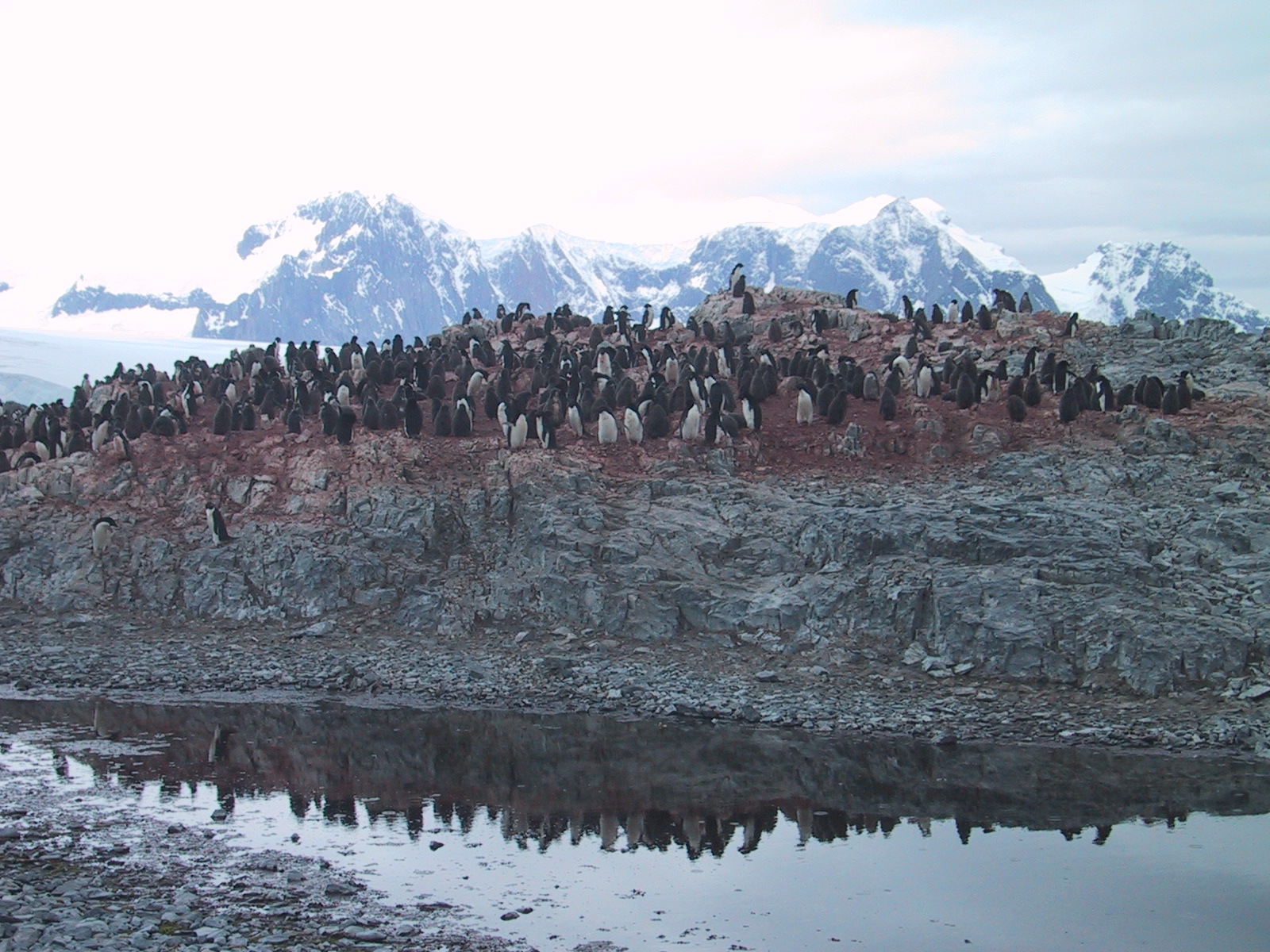
Adélie penguins (Pygoscelis adeliae) on Avian Island.
Southern Giant Petrels, South Polar Skuas, and Blue-eyed Shags breed on the island as well.
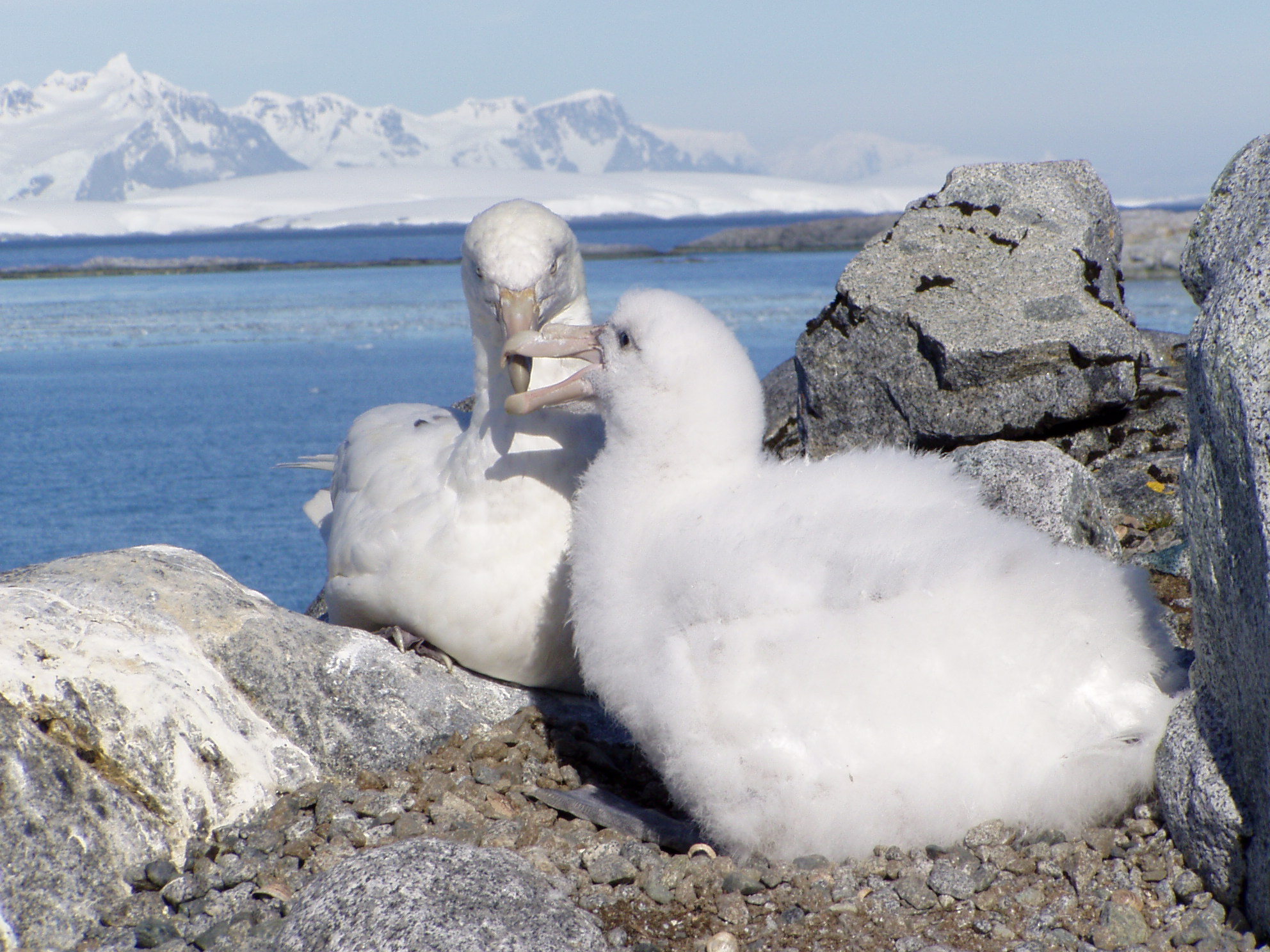
Southern Giant Petrels (Macronectes giganteus)
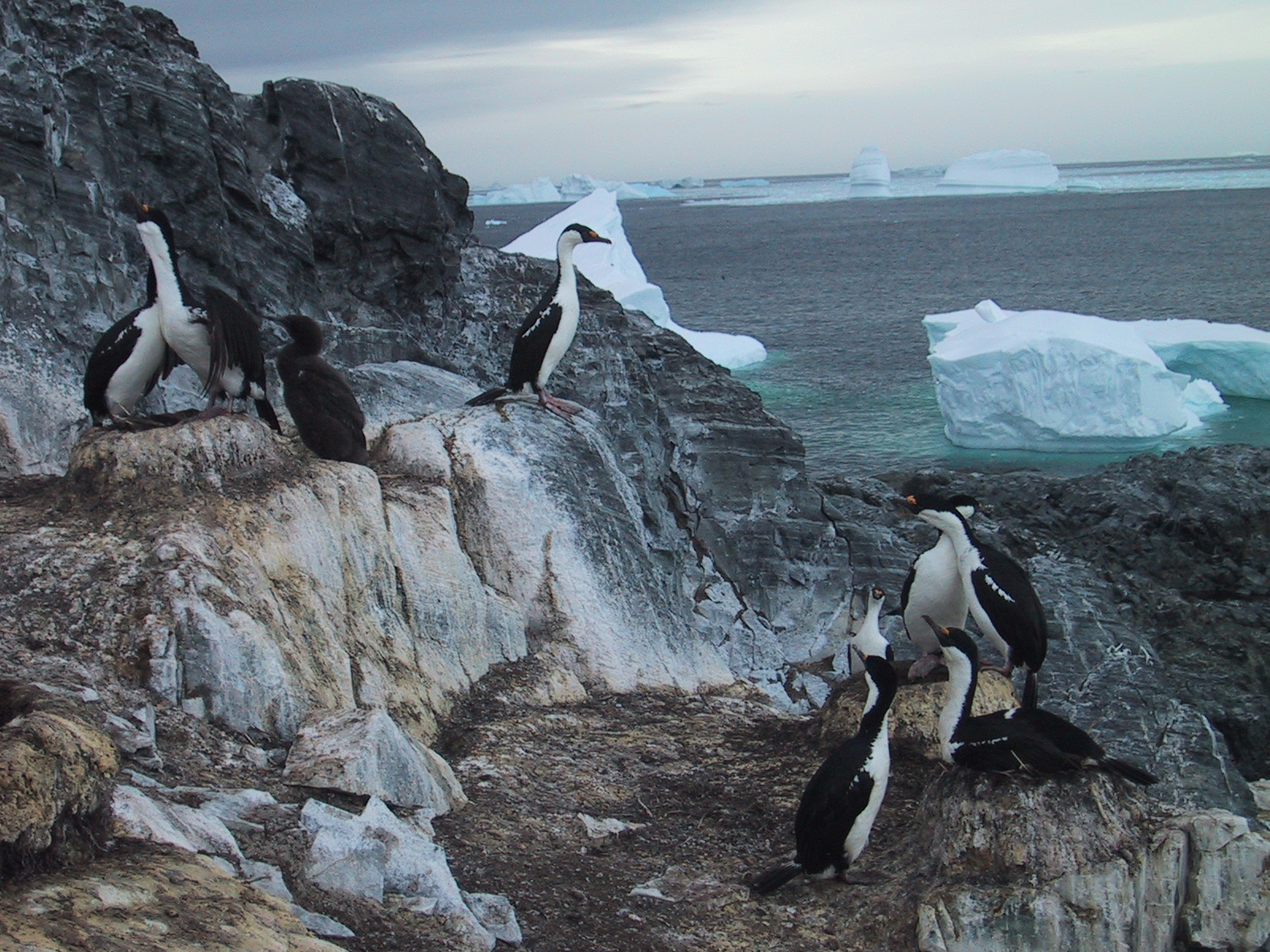
Blue-eyed Shags (Phalacrocorax bransfieldensis)
While working on Avian Island, our researchers are provided with accommodations rivaling the best hotels of New York, Paris, and London.
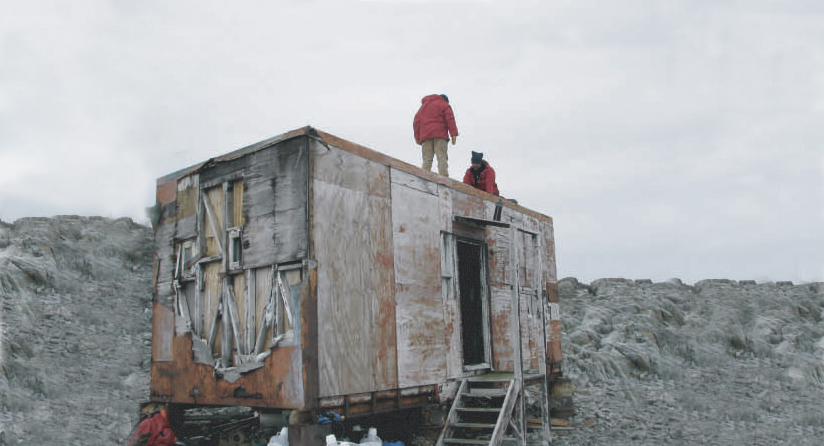
Here, you can see our Marine Technicians Pete Dalfero and Chip Cotton making some “cosmetic” repairs to the roof of our luxurious cabana.
An important part of our work on Avian involves attaching Platform Terminal Transmitters (PTTs) to breeding Adélies to track their foraging paths by satellite. This allows us to gain a better understanding of the foraging ecology of breeding Adélies during the chick-rearing season and how environmental variables (like seasonal ice conditions and food availability) as well as provisioning demands and sex of the individual influence foraging locations. We also collect diet samples from birds returning from foraging to investigate how the composition of their diets differ from those breeding in other parts of the Peninsula and how they have been changing over time.
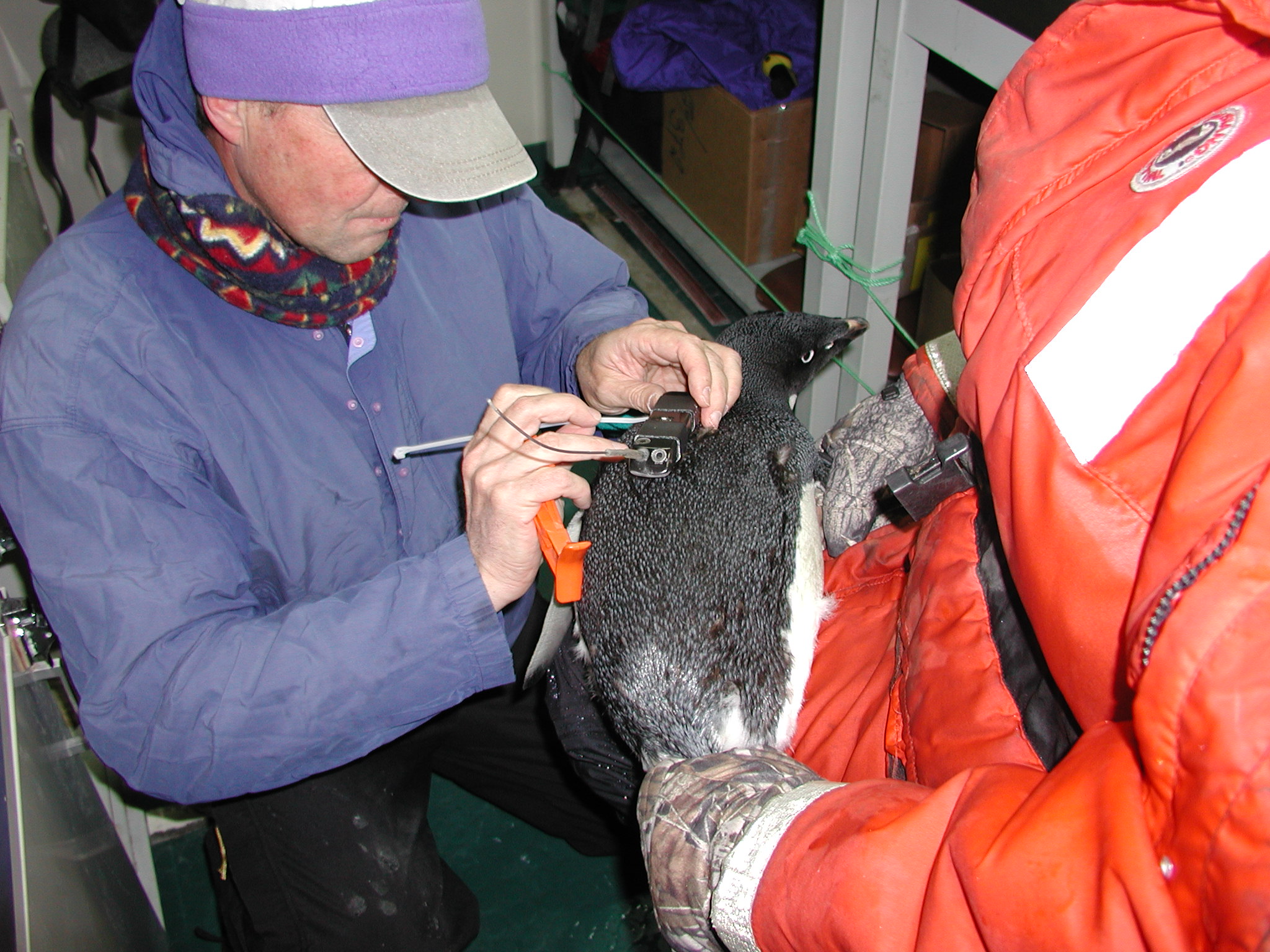
Attaching a PTT.
While a majority of our work focuses on Adélie Penguins breeding on Avian, we also conduct censuses of the other seabirds breeding on the island. And, while the penguins, petrels, and shags are only slightly agitated by our presence, the South Polar Skuas make their irritation well known when we are near one of their nests by “dive-bombing” anyone who ventures too close.
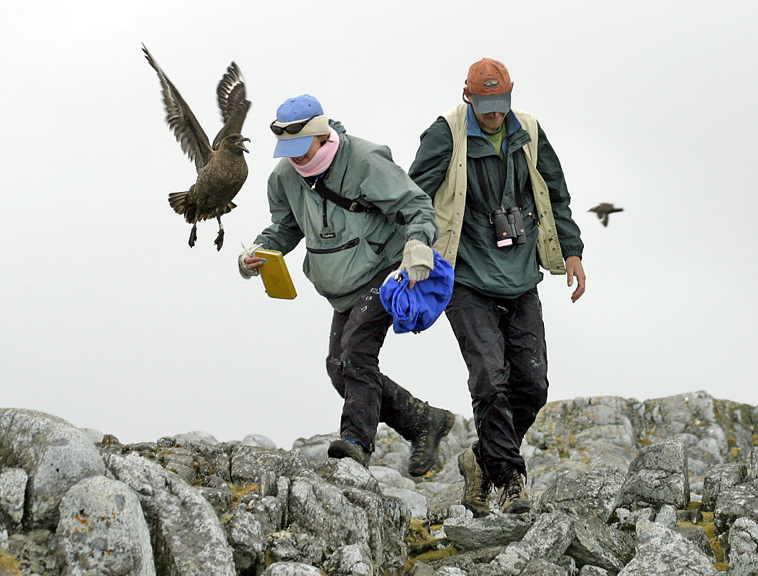
South Polar Skuas (Catharacta maccormicki) dive-bomb the birders.
Marine mammals also spend time on Avian and are included in our island census counts. Southern Elephant Seals and Antarctic Fur Seals make up the majority of marine mammals found on Avian Island; however, Crabeater and Weddell Seals are also often seen during our surveys.

A Weddell seal (Leptonychotes weddellii)
Avian Island represents the southernmost extent of much of our work with Adélie penguins and other seabirds, and combined with our other study sites along the Peninsula, represents a unique opportunity for monitoring the effects of global climate change on seabird and mammal communities of this region. For the members of the B-013 seabird group, the Avian Island field camp is probably the highlight of the PAL-LTER summer cruise.

 No comments
No comments 






